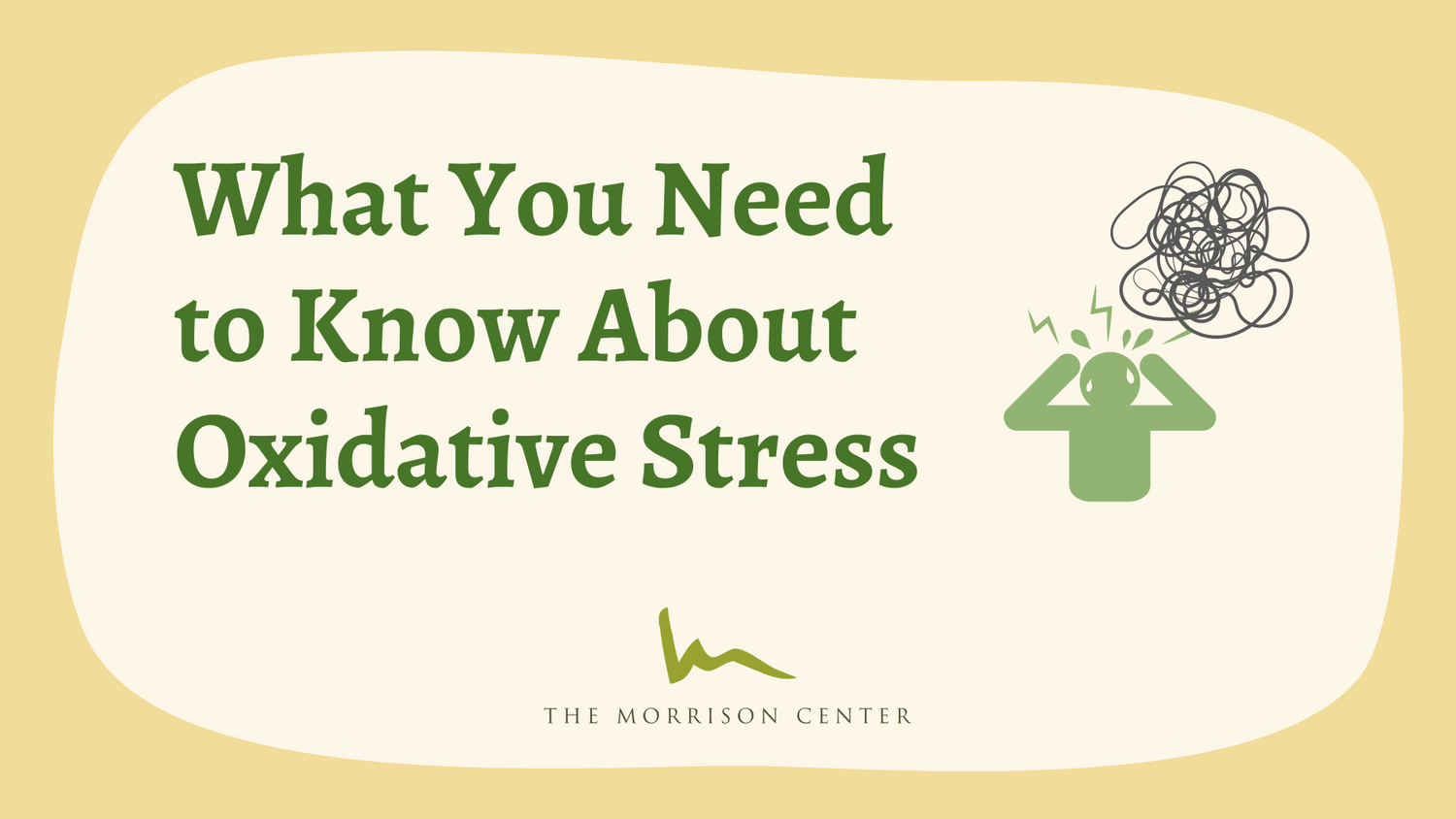In our last newsletter, we talked about how to protect yourself from the summer sun, a powerful pro-oxidant for our skin. But oxidative stress impacts our bodies in many ways, and more than just skin-deep.
What is oxidative stress?
Oxidative stress is when our cells are damaged by small molecules called reactive oxygen species (ROS), which steal electrons from cell parts like DNA. This process, called “oxidation,” is just like metal going to rust! High oxidative stress can contribute to cancer, diabetes, atherosclerosis, hypertension, Alzheimer’s, Parkinson’s, and even eye floaters.
However, some ROS are normal, and even necessary for things like fighting viruses and making thyroid hormone. Excess ROS can come from high blood sugar, toxins like heavy metals and air pollution, antibiotics, excess iron, and inflammation.
The good news is our bodies have a powerful protection from oxidative stress – antioxidants! Antioxidants are found in food and supplements, and some of the most powerful ones are made by the body itself. The more oxidative stress we have, the more our antioxidants can get depleted.
So how do we know if we have too much oxidative stress? There are no reliable signs or symptoms because oxidative damage is usually hidden until disease appears. Certain blood tests can give us an earlier clue:
- Vitamin C. You may need more of this important nutritional antioxidant than you’re getting in your diet, especially if you’re exposed to extra oxidative stress.
- Total bilirubin. While usually considered a marker for liver and gallbladder issues when elevated, very low total bilirubin can indicate depleted antioxidants. Low bilirubin has been associated with greater all-cause mortality.1
- Uric acid. Like total bilirubin, this is a common blood marker that can indicate depleted antioxidants when levels are low.2 High levels are typically related to gout.
- GGT is a common marker for alcohol-related liver damage. Milder elevations can also be a sign of depleted glutathione, the master antioxidant in the liver.3
- oxLDL and F2 Isoprostane are antioxidant markers specifically for the heart and cardiovascular system, and are often a sign that you need more vitamin E.
Here's how to protect yourself from excess oxidative stress:
Eat the rainbow. The colors in plants come from compounds called polyphenols, which are powerful antioxidants. One of the best ways to boost your reserves is to eat a colorful diet of whole plants. Try to get the full rainbow on your plate daily!
Take antioxidant supplements for specialized support. Here are some of our favorites:
- Herbs like Milk Thistle Forte** and Curcumin 500 can enhance how our body makes antioxidants, especially in the liver.4,5
- The antioxidant vitamins Buffered Vitamin C and Annatto-E 300** can directly scavenge ROS, and many of us don’t get enough in our diets!
- CoQ10 is an antioxidant for energy and muscles, especially beneficial for cardiovascular health and for people taking statin drugs.6
- Reacted Selenium** supports the body’s powerful glutathione system. Too much selenium can be toxic, so speak with a healthcare provider about whether a supplement is right for you!
- NAC is a special amino acid that supports the production of glutathione as well as scavenging free radicals.
Natural detoxification is the best way to reduce your toxic burden of pro-oxidants like heavy metals and air pollution. For the best results, schedule a consultation with one of our practitioners or health coaches to design a personalized plan.
Exercising and taking cold showers stimulate the mitochondria to be more efficient at processing ROS, boosting our ability to quench oxidative stress. The best thing is, these simple strategies are free!
**This product is available online for TMC patients only. If you are not a TMC patient and interested in learning more about it, please call the TMC office at 212-989-9828.
References
- Ong KL, Allison MA, Cheung BMY, Wu BJ, Barter PJ, Rye KA. The relationship between total bilirubin levels and total mortality in older adults: the United States National Health and Nutrition Examination Survey (NHANES) 1999-2004. PloS One. 2014;9(4):e94479. doi:10.1371/journal.pone.0094479
- Fabbrini E, Serafini M, Colic Baric I, Hazen SL, Klein S. Effect of plasma uric acid on antioxidant capacity, oxidative stress, and insulin sensitivity in obese subjects. Diabetes. 2014;63(3):976-981. doi:10.2337/db13-1396
- Koenig G, Seneff S. Gamma-Glutamyltransferase: A Predictive Biomarker of Cellular Antioxidant Inadequacy and Disease Risk. Dis Markers. 2015;2015:818570. doi:10.1155/2015/818570
- Surai PF. Silymarin as a Natural Antioxidant: An Overview of the Current Evidence and Perspectives. Antioxidants. 2015;4(1):204-247. doi:10.3390/antiox4010204
- Jakubczyk K, Drużga A, Katarzyna J, Skonieczna-Żydecka K. Antioxidant Potential of Curcumin—A Meta-Analysis of Randomized Clinical Trials. Antioxidants. 2020;9(11):1092. doi:10.3390/antiox9111092
- Zhao D, Liang Y, Dai S, et al. Dose-Response Effect of Coenzyme Q10 Supplementation on Blood Pressure among Patients with Cardiometabolic Disorders: A Grading of Recommendations Assessment, Development, and Evaluation (GRADE)-Assessed Systematic Review and Meta-Analysis of Randomized Controlled Trials. Adv Nutr Bethesda Md. 2022;13(6):2180-2194. doi:10.1093/advances/nmac100



Leave a comment